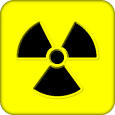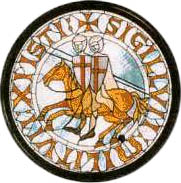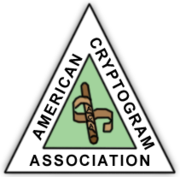

| ENGLISH LETTER FREQUENCIES |
|
ETOAN IRSHL DCUP FM WY BGV
Okay, so it's not quantitative, but it's how I remember the relative frequency of letters in the English language, and it serves to explain why I chose this domain name. Here's some more detail on statistical occurences of letters in the English language.
So, in set of 100 letters of English text, on average 13 of them would be 'E', 9 would be 'T', and so on. From Amazing Stories, volume 9 number 6 (October 1934):
|
| GENERATING RANDOM NUMBERS |
 Click here
for an explanation of my set-up to generate random numbers from
a common radioactive source.
Click here
for an explanation of my set-up to generate random numbers from
a common radioactive source.
If you're looking for alternatives, here is a simple electronic number generator from 1976. I would not recommend it for serious cryptographic use, but it's neat to build nonetheless. Machine generation of pseudo-random numbers dates back to the early days of computing. Click here for a PDF of John Mauchly's 1949 paper, "Pseudo-Random Numbers". The 12-page paper includes the generation algorithm (the "Binac routine" A-510-2B), a flowchart, results and analysis, as well as a one-page description of the UNIVAC system used to generate the numbers. |
| ON-LINE REFERENCES |
| QUOTES |
|
From the 1984 movie Repo Man:
Leila: Are you using a scrambler?
From the 1976 movie Midway:
Captain Garth: How much can you decipher? From comedienne Elayne Boosler:
"I have six locks on my door all in a row. When I go out, I lock every other one. I figure no matter how long somebody stands there picking the locks, they are always locking three."
From the 1983 movie Never Say Never Again:
Bond: Commander Peterson, are you equipped with the new XT-7B's? |
| DIGRAPH FREQUENCY TABLE |
|
| KERCKHOFF'S PRINCIPLES |
|
Auguste Kerckhoffs' Principles:
|
| GROUPS OF FIVE |
|
The practice of transmitting encrypted messages in sets of 5 characters
(also known as "groups of five") is a historical convention that
originated with the use of the telegraph and continued into the early
days of radio communication.
In the early days of telegraphy, messages were transmitted using a system of dots and dashes known as Morse code. Morse code was transmitted using a series of electrical pulses, and operators would tap out the code on a telegraph key to send messages over long distances. Because Morse code had no punctuation and did not differentiate between upper and lower case letters, messages were often written out in all caps with no spaces between words. This made messages difficult to read and increased the risk of errors. To make messages easier to read and reduce the risk of errors, telegraph operators would group the letters of each word into sets of five characters. These groups were typically separated by spaces or slashes and were known as "groups of five" or "five-letter groups." By breaking the message up into smaller chunks, operators could more easily read and transmit the message, and errors could be quickly identified and corrected. The use of groups of five continued into the early days of radio communication, and the convention of using groups of five to transmit encrypted messages has persisted to this day. In modern cryptography, the use of groups of five is not strictly necessary, but it is still a common practice in some contexts as a nod to this historical convention. |
| IBM AND DES |
|
IBM briefly describes the standardization and use of the
Data Encryption Standard (DES) in a 1979 Student Manual
here.
|
| COMPUTERS AND CRYPTOLOGY |
|
Here is a scan of the
Computers and Cryptology article by Fred Chesson that appeared in
the January 1973 issue of Datamation magazine.
|
| VOYNICH MANUSCRIPT |
|
The Voynich Manuscript is available on-line here.
|
| NSA TECHNICAL JOURNAL ARTICLES |
|
The National Security Agency has declassified a number of Technical Journal articles that can be
read here.
|
| INTELLIGENT NOISE |
|
In the late 1970's a team of engineers in Seattle designed
a secure telephone they called the PhasorPhone. Their attempt to
have the design patented resulted in a secrecy order issued at
the direction of the National Security Agency (NSA).
Some brief exerpts from James Bamford's book
The Puzzle Palace describing the situation can be
seen by clicking
here.
Even TIME magazine ran a story about it in their October 2, 1978 issue. You can read a snippet here. An Associated Press news story that ran in February 1980 contained the following: The inventors, who are still working on devices that scramble or encode conversations or computer data, hope they don't run into the NSA again. Timeline
Patent application filed on October 20, 1977.
Origins The original design of the PhasorPhone was prompted by an article entitled Intelligent Noise which appeared in the December 1962 issue of Analog magazine. You can read the article by clicking here. The article makes reference to radar signals using pseudo-noise sequences, which likely refers to either: (a) MIT Lincoln Laboratory's high frequency NOMAC (NOise Modulation and Correlation) system, known under the Army Signal Corps production name F9C. NOMAC was a communications system using noise-like signals and cross-correlation detection. Papers describing this method and system date back to 1952. You can read more about the history of this system here; You can also read Noise-like Signals and their Detection by Correlation (Dated 26 May 1952) here (local copy here). or (b) the Jet Propulsion Laboratory (JPL) radio communication system called CODORAC (COded DOppler, Ranging, and Command) that became the basis for what is now the Deep Space Network (DSN).
|
| ENCRYPTION TYPES |
The Committee on National Security Systems (CNSS), in the
National
Information Assurance (IA) Glossary, CNSS Instruction No. 4009,
defines the following four types of encryption systems:
(See also Federal Standard 1037C)
|
| ENIGMA MACHINE SIMULATION |
|
You can see a simulation of the World War II-era Enigma encryption
machine in Flash
here.
|
| PAPER ENIGMA MACHINE |
|
Mike Koss has put together a basic model of the Engima
encipherment method using just a sheet a paper. You can
read more about it
here.
|
| M-209 CIPHER MACHINE SIMULATION |
|
Dirk Rijmenants has an excellent M-209 simulator for Windows
here.
He also has an Enigma simulator here.
|
| ENCRYPTION USED BY THE KNIGHTS TEMPLAR |
 Question for the reader: are there any good references for details
regarding the coding scheme used by the Knights Templar during the
Middle Ages for their "letters of credit"?
Question for the reader: are there any good references for details
regarding the coding scheme used by the Knights Templar during the
Middle Ages for their "letters of credit"?
By 1150, the Order's original mission of guarding pilgrims had changed into a mission of guarding their valuables through an innovative way of issuing letters of credit, an early precursor of modern banking. Pilgrims would visit a Templar house in their home country, depositing their deeds and valuables. The Templars would then give them an encrypted letter which would describe their holdings. While traveling, the pilgrims could present the letter to other Templars along the way, to "withdraw" funds from their account. This kept the pilgrims safe since they were not carrying valuables, and further increased the power of the Templars.
|
| ACA COMPUTER SUPPLEMENTS |
 The
American Cryptogram Association
(ACA) was organized
originally to encompass the many phases of paper-and-pencil
puzzle solving. It developed rapidly to include all forms
of cryptography, and in recent years the home computer has
begun to augment or replace the pencil and paper.
The
American Cryptogram Association
(ACA) was organized
originally to encompass the many phases of paper-and-pencil
puzzle solving. It developed rapidly to include all forms
of cryptography, and in recent years the home computer has
begun to augment or replace the pencil and paper.
The Computer Supplement was a printed quarterly publication that served as an adjunct to the ACA's flagship magazine The Cryptogram, focused on the use of computers as aids to solving. You can read more about the ACA and computer solutions to cryptographic puzzles here. |